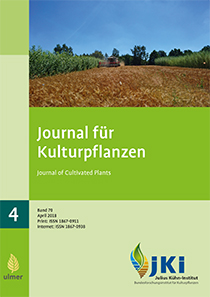Agroforestry in Germany: Economic perspectives of alley cropping systems
DOI:
https://doi.org/10.5073/JKI.2018.04.01Keywords:
Literature review, agroforestry, economic effects, alley cropping, short-rotation coppiceAbstract
Land management in Germany has been characterised by a continued intensification in recent decades. This development has come along with the replacement of landscape elements like hedges, bushes and single trees. Despite the high relevance of food supply, further social claims and requirements with regard to agricultural have land gained in importance over time. These include for example ecological aspects and the enhancement of the appearance of the landscape. Alley cropping systems with short-rotation wood can contribute to an increase of biodiversity and improved landscapes. Furthermore, the simultaneous growing of wood and crops can bring about economic benefits as well. Despite their ecological, social and economic advantages, only a very limited number of agroforestry systems has been established in Germany, mostly on experimental sites. Reasons for this may be economic disadvantages. This paper presents a comprehensive literature review about the economic effects of alley cropping agroforestry in comparison to traditional cropping. The results show that from an economic point of view agroforestry systems most is preferable for medium quality agricultural sites. Results also show that three to ten percent higher yields due to synergy effects between tree crops and field crops are needed to make alley cropping systems financially attractive. Furthermore, liquidity has to be taken into account due to the relatively high investment costs of the trees and delayed returns moreover. The results provide manifold starting for measures to increase the attractiveness of alley cropping systems.
Downloads
Published
Issue
Section
License
The content of the journal is licensed under the Creative Commons Attribution 4.0 License. Any user is free to share and adapt (remix, transform, build upon) the content as long as the original publication is attributed (authors, title, year, journal, issue, pages).
The copyright of the published work remains with the authors. The authors grant the Journal of Cultivated Plants, the Julius Kühn-Institut and the OpenAgrar repository the non-exclusive right to distribute and exploit the work.







